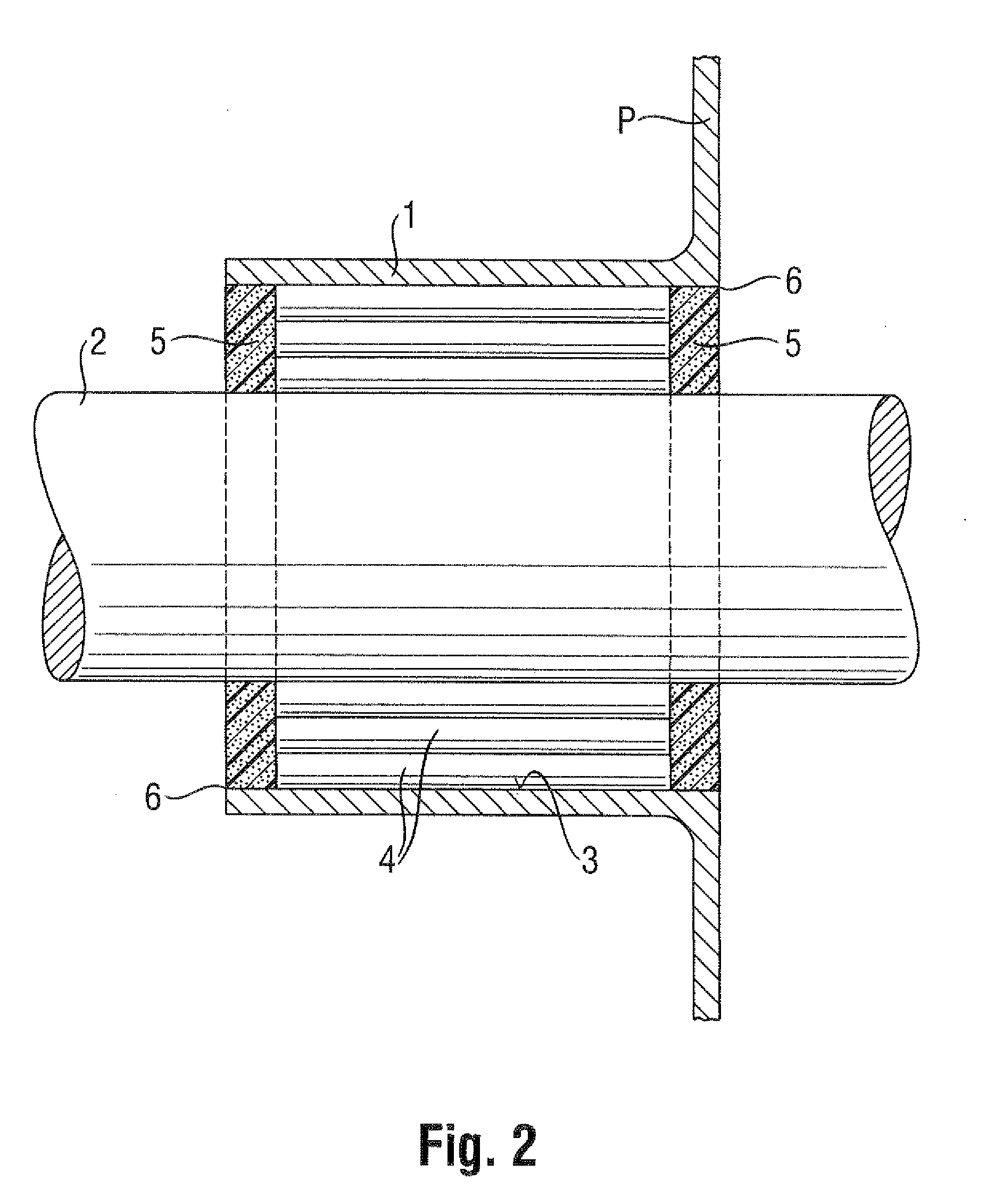System and method for sealing in a conduit a space between an inner wall of the conduit and at least one pipe or cable extending through the conduit
a technology of pipe or cable and inner wall, which is applied in the direction of fluid pressure sealing joints, pipe elements, pipe supports, etc., can solve the problems of unwelcome intrusion of heat through material, inability to install insulating lining, and inability to meet the needs of penetration, so as to enhance the stability of the support structure, the effect of further stability of the sealant layer and high frictional for
- Summary
- Abstract
- Description
- Claims
- Application Information
AI Technical Summary
Benefits of technology
Problems solved by technology
Method used
Image
Examples
Embodiment Construction
[0032]FIG. 1 shows schematically an example of a cross section of a transit system TS in which, as shown, a system according to the invention can be applied. The transit system TS is usually incorporated in a metal substantially plate-shaped construction element P. This plate-shaped construction element P can be situated between two spaces SI, SII, as separated by the construction element P. The plate-shaped construction element may for instance be a part of a bulkhead, a wall or a deck in or on a ship or another construction that is substantially constructed of a metal such as for instance steel. The transition system TS comprises a conduit 1, made of a material which is in this example thermally conductive. The conduit 1 may be welded into an opening of the construction element P. Although as shown in this example, the conduit 1 is incorporated in a metal substantially plate-shaped construction element P, it is also possible that the conduit 1 is incorporated in for instance a con...
PUM
 Login to View More
Login to View More Abstract
Description
Claims
Application Information
 Login to View More
Login to View More - R&D
- Intellectual Property
- Life Sciences
- Materials
- Tech Scout
- Unparalleled Data Quality
- Higher Quality Content
- 60% Fewer Hallucinations
Browse by: Latest US Patents, China's latest patents, Technical Efficacy Thesaurus, Application Domain, Technology Topic, Popular Technical Reports.
© 2025 PatSnap. All rights reserved.Legal|Privacy policy|Modern Slavery Act Transparency Statement|Sitemap|About US| Contact US: help@patsnap.com



